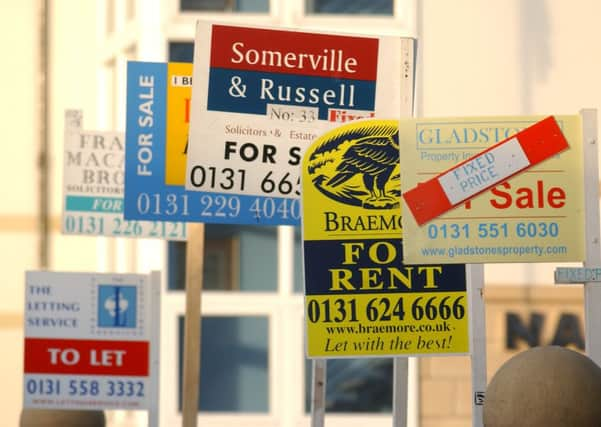House prices continue to show strong growth


The average UK property price in May reached £186,512, the building society said, surpassing a previous record set in October 2007 before the financial downturn took hold, when property values reached £186,044 across the UK.
The figures sparked speculation from experts that steps could be taken to rein in the housing market.
Advertisement
Hide AdAdvertisement
Hide AdOn a month-on-month basis, prices have now been edging upwards for the last 13 months in a row. But May’s monthly price increase of 0.7 per cent is weaker than the 1.2 per cent rise in April.
Nationwide said the slowdown could partly be the result of new mortgage lending rules, which officially started in April.
Robert Gardner, the building society’s chief economist, said first-time buyers are playing an “increasingly important role in the housing market recovery” and made up 48 per cent of house purchase activity in March.
People taking their first step on the property ladder have accounted for more than 80 per cent of Help to Buy loans so far, but the Nationwide report said the scheme appears to be playing a “supporting rather than a starring role” in the housing market recovery.
“The modest numbers involved so far suggest that Help to Buy is unlikely to be the main factor behind the recent pick-up in the housing market,” Mr Gardner said.
“Low mortgage rates and growing buyer confidence on the back of improving labour market conditions and the brighter economic outlook are probably playing a much greater role in stimulating buyer demand.”
He also said there were some “tentative signs” that activity within the housing market may be starting to moderate with mortgage approvals in April around 17 per cent below January’s high.
Melanie Bowler, an economist at Moody’s Analytics, said: “Worries of a housing bubble are putting pressure on the Bank of England to act.”
Advertisement
Hide AdAdvertisement
Hide AdShe predicted the Bank will recommend that the Government revises its Help to Buy support scheme, which could include reducing the £600,000 maximum property value or limiting the scheme to regions outside London and the south-east of England.
Howard Archer, chief UK and European economist at IHS Global Insight, said he expects to see prices continue to pick up by around 5-6 per cent over the rest of 2014.
David Marshall, business development manager at the Edinburgh Solicitors’ Property Centre, said trends which were apparent in some parts of the UK were not reflected in other parts of the country.
“We have certainly not seen the levels of growth there are at UK level which are driven by London and the south east. Rises in property prices in Edinburgh have been around two per cent annually.
“Certainly many more homes are selling but the impact on house prices has not been as great.”
Mr Marshall added that while the average Edinburgh property price was £200,895 reflecting the city’s traditionally higher prices, the average Scottish house price at approximately £170,000 was less than the UK average.
“The Bank of England is quite right to take action to make sure house price inflation doesn’t rise out of control but it is important that they take into account regional variations.”
Alan Ferguson of the Chartered Institute of Housing in Scotland, said while there were concerns Help to Buy was fuelling the housing bubble this was not a major factor in the Scottish housing market.
Advertisement
Hide AdAdvertisement
Hide Ad“Edinburgh, the Lothians and Aberdeen have high property prices in much the same way as London and the south east. But Help to Buy schemes are getting first time buyers onto the first rung of the property market. But our members are reporting that housing associations are providing rented accommodation at market rents for a niche of people who can’t afford to buy but cannot get council housing.”